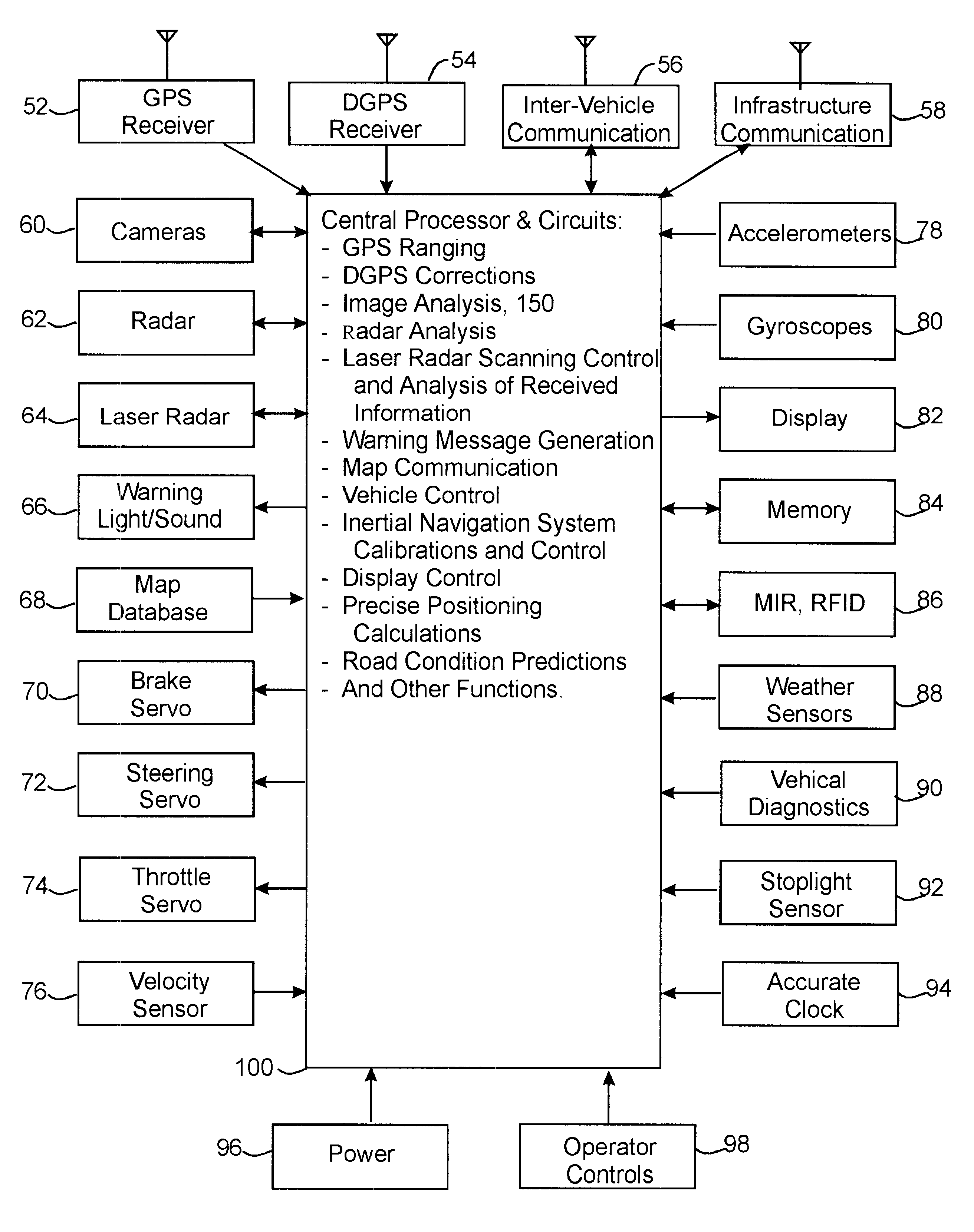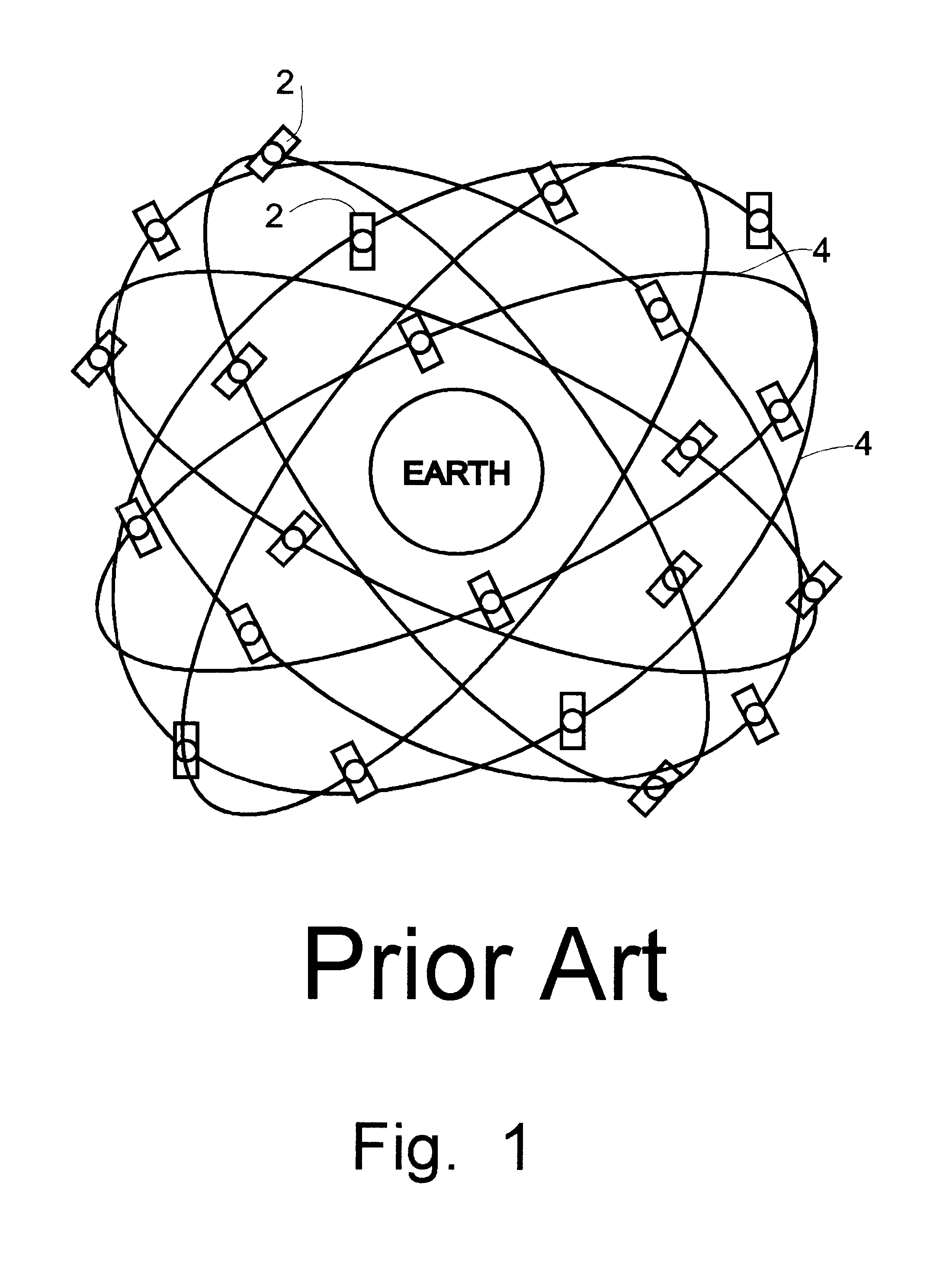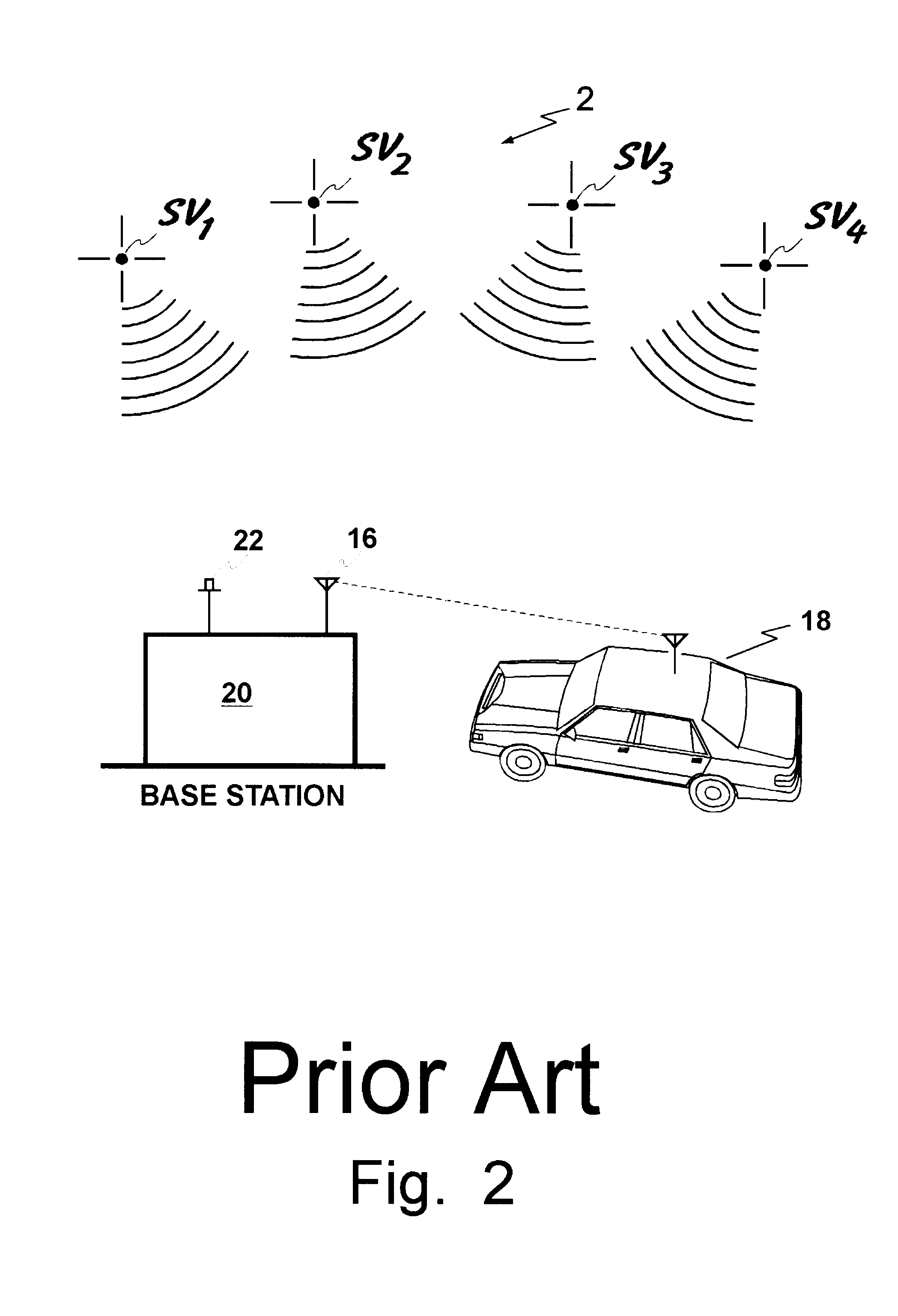Automobile accidents are one of the most serious problems facing society today, both in terms of deaths and injuries, and in financial losses suffered as a result of accidents.
The suffering caused by death or injury from such accidents is immense.
The costs related to
medical treatment, permanent injury to accident victims and the resulting loss of employment opportunities, and financial losses resulting from damage to property involved in such accidents are staggering.
The increase in
population and use of automobiles worldwide with the concomitant increased congestion on roadways makes development of systems for collision
elimination even more urgent.
In the second case, hundreds of millions of man-hours are wasted every year by people stuck in traffic
jams on the world's roadways.
There have been many attempts to solve both of these problems; however, no single solution has been able to do so.
In leaving the
parking space, he or she may be at risk from an
impact of a vehicle traveling on the road.
Thus, action by the driver is still invariably required.
However, to date, no product has been proposed or designed which combines all of the requirements into a single electronic
system.
The fact that so many people are being seriously injured and killed in traffic accidents and the fact that so much time is being wasted in
traffic congestion is proof that the current process is not working and requires a major redesign.
Although it is technologically feasible, it is probably socially unacceptable at this time for a
vehicle safety system to totally control the vehicle.
This is obviously impractical.
Whereas it would be difficult to install and maintain hardware such as a wire down the center of the road for every road in the world, it is not difficult to survey every road and
record the location of the edges, and the lanes for that matter, of each road.
The driver may or may not heed this warning, perhaps due to an excessive
false alarm rate, or he or she may have become incapacitated, or the
system may fail to detect a vehicle in the
blind spot and thus the system will fail.
For those roads that are treated with salt to eliminate frozen areas, the meteorological and historical data will not be sufficient.
Many roads in the world are congested and are located in areas where the cost of new
road construction is prohibitive or such construction is environmentally unacceptable.
It has been reported that an accident on such a highway typically ties up traffic for a period of approximately four times the time period required to clear the accident.
This of course is insufficient.
There remains a variety of objects whose location is not fixed, which have no transmitters and which can cause accidents.
Another $50 billion are lost in wasted time of people on congested highways.
However, the statistics presented show that in
spite of this goal, the number of deaths is now increasing.
However, the deployment of technologies that are inconsistent with the eventual solution of the problem will only
delay implementation of the proper systems and thereby result in more deaths and injuries.
Of course the number of fatalities may still increase due to increased road use.
Too much time and resources have already been devoted to these areas.
This is wrong and the IVI should now move vigorously toward the deployment of proven technology.
Simple neural networks are probably not sufficient for this purpose and neural fizzy and modular neural networks are probably required.
Naturally, since
radar cannot accurately determine this area it has to be assumed by the system.
Thus, true collision avoidance cannot be obtained without an accurate knowledge of the road geometry.
This can lead to significant errors.
Lemelson also does not make use of accurate map
database and thus it is unable to distinguish cases where two cars are on separate lanes but on an apparent collision course.
Thus, the Lemelson system is unable to provide the accuracy and reliability required by the Road to Zero Fatalities system described herein.
While these sensors, meters, elements, systems and controls have served limited specific purposes, the prior art has disadvantageously failed to integrate them in a comprehensive fashion to provide a complete dynamic
route guidance, dynamic vehicular control, and safety improvement system."
However, displacement wheel sensors are plagued by tire slippage, tire wear and are relatively inaccurate requiring recalibration of the current position.
Compasses are inexpensive, but suffer from drifting particularly when driving on a straight road for extended periods.
Compasses can sense turns, and the system may then be automatically recalibrated to the current position based upon sensing a turn and correlating that turn to the nearest turn on a digitized map, but such recalibration, is still prone to errors during excessive drifts.
Moreover, digitized map systems with the
compass and wheel sensor positioning methods operate in two dimensions on a three dimensional road
terrain injecting further errors between the digitized map position and the current vehicular position due to a failure to sense the distance traveled in the vertical dimension."
However, the GPS reception is not used for automatic accurate recalibration of current vehicular positioning, even though C-MIGITS and like devices have been used for
GPS positioning, inertial sensing and epoch time monitoring, which can provide accurate continuous positioning."
"These Intelligent Vehicle Highway Systems use the
compass and wheel sensors for vehicular positioning for
route guidance, but do not use accurate GPS and inertial
route navigation and guidance and do not use inertial measuring units for dynamic vehicular control.
Even though dynamic electronic vehicular control, for example, anti-lock braking, anti-skid steering, and electronic control suspension have been contemplated by others, these systems do not appear to functionally integrate these dynamic controls with an accurate inertial route
guidance system having an inertial measuring unit well suited for
dynamic motion sensing.
While two-way
RF communication is possible, the flow of necessary information between the vehicles and central system appears to be exceedingly lopsided.
The Intelligent Vehicular Highway Systems disadvantageously suggest a required two-way RF
radio data system.
To the extent that any system is bi-directional in operation tends to disadvantageously require additional frequency bandwidth capacity and system complexity."
This, of course, is the RMS error.
In practice, multipath affects, usually from nearby surfaces, limit the accuracy achievable to around 5 millimeters.
In this case, most of the other GPS error sources are common.
The only major problem, which needs to be solved to carry out high precision kinematic GPS, is the
integer ambiguity problem.
However, it is unclear as to whether the second position system is actually more accurate than the GPS system.
This combined system, however, cannot be used for sub-meter positioning of an automobile.
This procedure does not give sub-meter accuracy.
"The range is called a "
pseudorange" because the
receiver clock may not be precisely synchronized to GPS time and because propagation through the
atmosphere introduces delays into the navigation
signal propagation times. These result, respectively, in a
clock bias (error) and an atmospheric bias (error).
However, precise (e.g., atomic) clocks are expensive and are, therefore, not suitable for all applications."
Therefore, the P-mode sequences are held in secrecy and are not made publicly available.
This forces most GPS users to rely solely on the data provided via the C / A mode of modulation (which results in a less accurate
positioning system)
That is, the U.S. government can selectively corrupt the
GPS data.
The C / A mode data, however, may be rendered substantially less accurate."
"In addition to the
clock error, the atmospheric error and errors from selective availability, other errors which affect GPS position computations include
receiver noise,
signal reflections, shading, and
satellite path shifting (e.g.,
satellite wobble).
These errors result in computation of incorrect pseudoranges and incorrect satellite positions.
Incorrect pseudoranges and incorrect satellite positions, in turn, lead to a reduction in the precision of the position estimates computed by a
vehicle positioning system."
The computational resolution of the
integer ambiguity has traditionally been an intensive arithmetic problem for the computers used to implement GPS receivers.
Search techniques often require significant computation time and are vulnerable to erroneous solutions when only a few satellites are visible.
If carried to an extreme, a
phased array of antennas results whereby the integers are completely unambiguous and searching is unnecessary.
The pseudo-random code can be used as a coarse indicator of differential range, although it is very susceptible to multipath problems.
However
dual frequency receivers are expensive because they are more complicated.
But such motion may not always be present when it is needed."
However, it mentions that this will be limited to controlled access roads such as interstate highways.
. . "
Image processing in this reference is limited to assessing road conditions such as rain,
snow, etc.
This patent does not give sub-meter accuracy.
Much information is lost in this system, however, due to the lack of knowledge of the vehicle's velocity.
Aside from that, it suffers from all the disadvantages of
radar systems as described here.
In particular, it is not capable of giving accurate three-dimensional measurements of an object on the roadway.
As a result, it is not possible to identify the objects in the
field of view.
Also, no attempt has been made to determine whether the object is located on the roadway or not.
On the other hand, if scanning this array at 100 feet, it would take 200 nanoseconds for the light to travel to the obstacle and back.
According to the Federal Highway Administration Intelligent Transportation Systems (ITS Field Operational Test), dynamic route guidance systems have not been successful.
However, the author (unnecessarily) complicates matters by using
push technology which isn't absolutely necessary and with the belief that
the Internet connection to a particular vehicle to allow all vehicles to communicate, would have to be stopped which, of course, is not the case.
DSRC could be used for inter-vehicle communications, however, its range according to the ITS proposal to the Federal Government would be limited to about 90 meters.
Also, there may be a problem with interference from
toll collection systems, etc.
This would not be sufficient for the RtZF system.
Fifty meters amounts to about one second, which would be insufficient time for the passing vehicle to complete the passing and return to the safe lane.
This, however, may interfere with other uses of DSRC such as automatic
toll taking, etc., thus DSRC may not be the optimum communication system for communication between vehicles.
"Automotive suppliers cannot sell infrastructure -dependent systems to their customers until the very large majority of the infrastructure is suitable equipped."
However, no recommendations are made for vehicle-to-vehicle communication technologies.
Additionally, no prior art system has successfully used the GPS
navigational system, or an augmented DGPS to locate a vehicle on a roadway with sufficient accuracy that that information can be used to prevent the equipped vehicle from leaving the roadway or striking another similarly equipped vehicle.
Prior art systems in addition to being poor at locating potential hazards on the roadway, have not been able to ascertain whether they are in fact on the roadway of off on the side, whether they are threatening vehicles, static signs over overpasses etc.
In fact no credible attempt to date has been made to identify or categorize objects which may
impact the subject vehicle.
 Login to View More
Login to View More  Login to View More
Login to View More 


